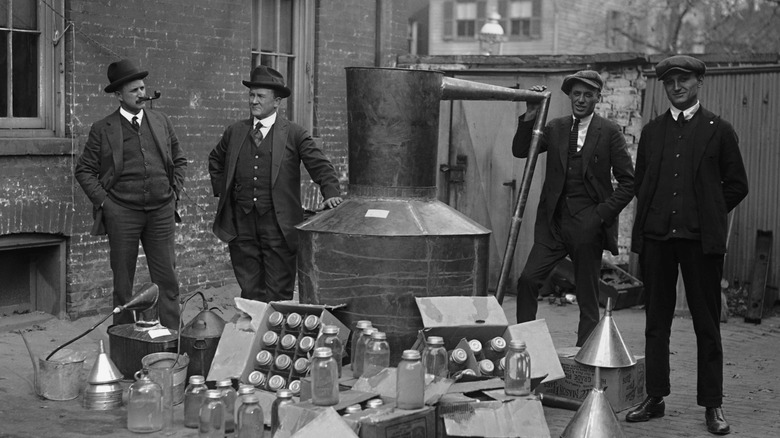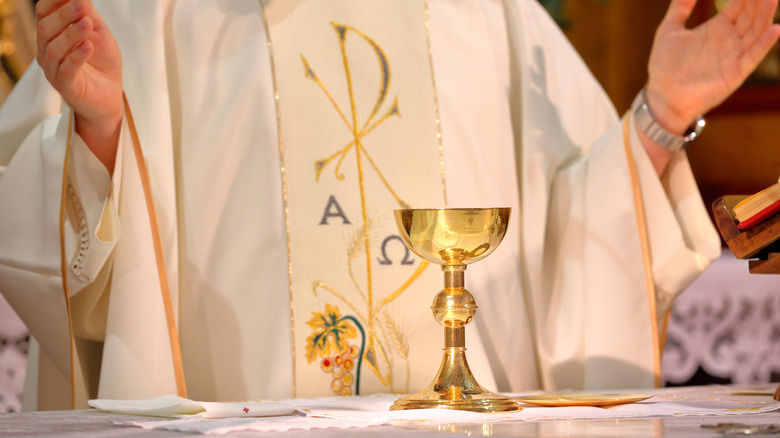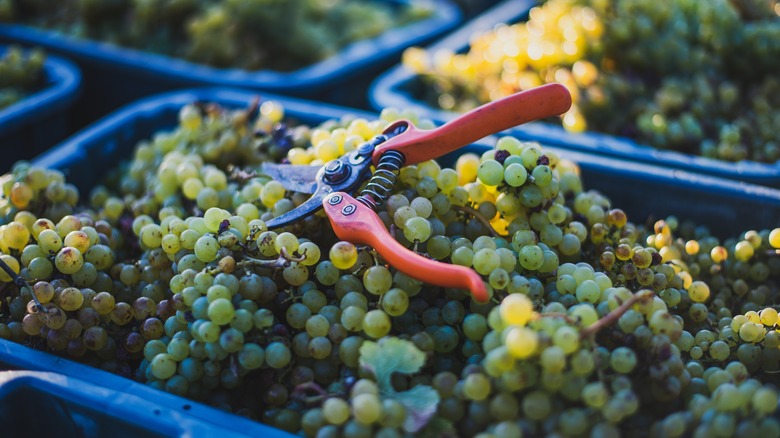Church Loopholes During Prohibition Saved California's Wine Industry
The 18th Amendment to the Constitution of the United States of America, enforced by the Volstead Act, made illegal the sale, production, transportation, and consumption of "intoxicating liquors." Yep, the government once banned booze. The era known as Prohibition, which lasted for 13 years from 1920 to 1933, has been immortalized in countless films and documentaries. It gave rise to one of the most notorious criminals in American history (Al Capone) and over time proved to be one of the most ineffective government regulations of all time.
Still, while it was the law of the land, rules needed to be enforced. While some of the most iconic brew houses in America, like Budweiser, came up with creative ways of using up their malts and barley for other products, the wineries of California were in trouble. As wine grapes are grown for the specific purpose of producing wine, California vineyards couldn't exactly use their abundant resources in any way other than what it was intended for.
Government crackdowns made it all but impossible for the Golden State's burgeoning wine industry to stay afloat — that is, until a loophole appeared that made this form of alcohol legal. It came in the shape of the Roman Catholic Church. Their sacramental wine was, it would seem, immune from Prohibition.
What is sacramental wine?
Sacramental wine, also known as altar or communion wine, is an extremely important component of Catholic Mass. As we see in "Matthew" 26: 27-28, while at the Last Supper, Jesus took a cup of wine and said: "'Drink from it, all of you, for this is the blood of my covenant, which will be shed on behalf of many for the forgiveness of sins.'" Thus Jesus shared the first communion among the disciples. The practice has continued in Catholic Mass ever since.
The sacramental wine, representing the blood, and the bread, representing the body, are the keystones of Holy Communion, in which Catholics receive Christ through the consumption of the wine and bread. Canon Law in the Catholic Church mandates that all communion wine must be of the purest quality. It must be completely natural, made from grapes, and not corrupted (i.e. spoiled and turned to vinegar). Any other drink is completely unacceptable.
For American churches, Prohibition proved a predicament for this rule. Catholic tradition dictated wine be served for Communion, and the new laws of the United States forbade it entirely. What was to be done? As it turns out, one of Prohibition's strictest enforcers had a soft spot for the Church.
And how did it save California's wine industry?
The California wine industry of the early 20th century was not the powerhouse it would become by centuries end. Grapes and wine had been grown and produced in California since the 18th century, and by 1919 the state was number one in the country in terms of wine production and dedicated acreage. Then, of course, Prohibition was enacted and the fledgling industry was plunged into a maelstrom of uncertainty. However, luck was on their side.
David Blair, the strict commissioner of internal revenue throughout most of Prohibition, had eased up on the ban on sacramental wine, allowing priests to store and use it for religious purposes. What prompted Blair's adherence to religious freedom is unclear, but the decision would prove to have major implications for California's wine industry.
Almost immediately after the ban was lifted, California vineyards began applying for permits that would allow them to make the special wine. Production during Prohibition increased an astonishing 700%. Several million gallons of sacramental wine were procured by churches across the country. Within two years of the easement, California had a booming sacramental wine industry. Whether all these permits were legitimate is impossible to know. But, what is clear is that without this loophole for a religious exemption, California's wine industry would likely have died during Prohibition. To make sacramental wine was to survive. And as we can all see for ourselves today, survive the California wine industry did.


